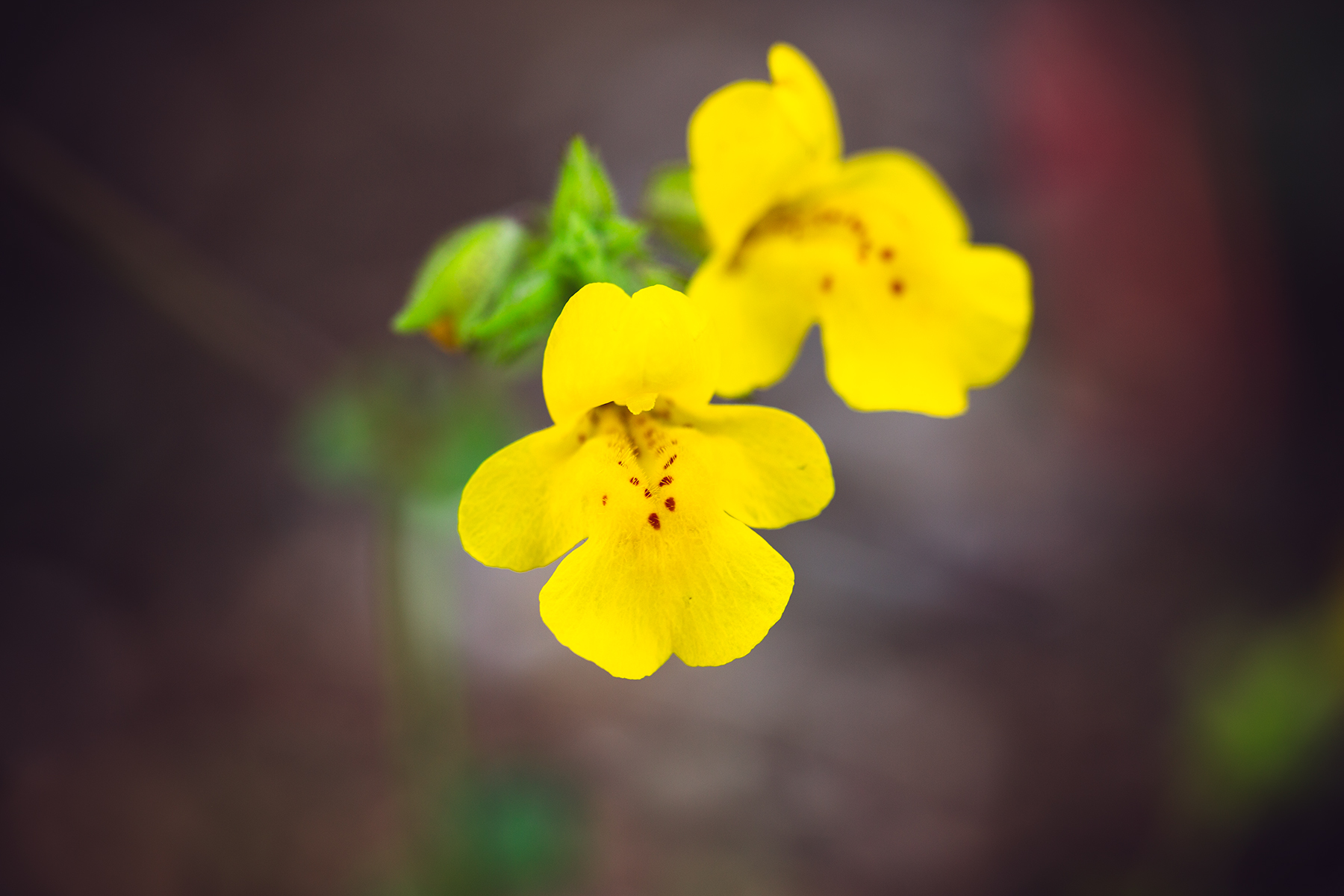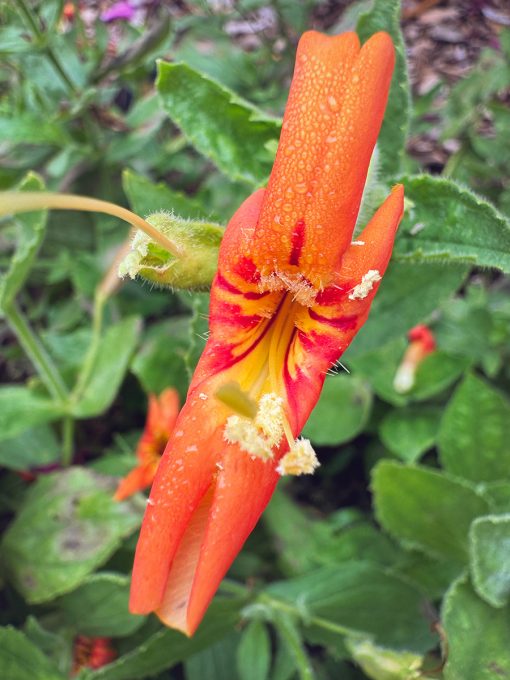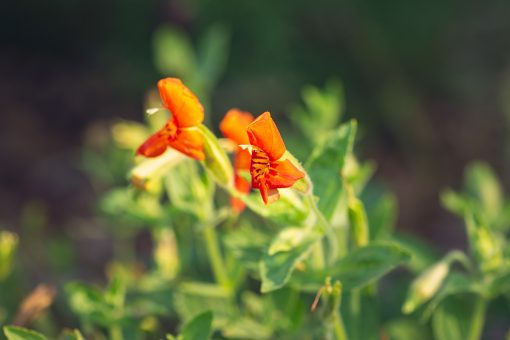Monkeying Around with Native Flowers
Erythranthe guttatus and cardinalis
First published in the October 2024 edition of Grapevine, the newsletter for Yamhill County Master Gardeners.
Each year as Autumn approaches, gardeners turn a critical eye to the land. They wonder what areas need a refresh, a boost, a do over. They eyeball empty spaces and dream up ways to fill it.
Last fall I began preparing a section of long-ignored pasture for native flowers. I made my coveted plant list and placed my order at an early spring native plant sale. The wet endless season meant my pink checkermallows slept. However, an apparent stowaway awoke brightly beside it.
A gorgeous, sunny-yellow monkeyflower had intertwined itself with the checkermallow. And as a native flower, it was more than welcome to stay. The cheerful blooms continued all spring and summer long.
I was charmed by the snapdragon-like petals and freckles. The happy accident had me searching to collect more monkeyflowers for the new bed. I picked out the scarlet monkeyflower at a local nursery. It is a brilliant, prolific bloomer that never tires. It is still going strong in September as I write.
Herbaceous monkeyflowers enjoy moist seeps (water sources) and tolerate some of the most inhospitable conditions. They snuggle up to geysers in Yellowstone, abandoned toxic copper mines, and mineral-laden soils. The plants soak up the splash zone of the Pacific Ocean and are just as comfortable in alpine meadows. My soil conditions are not so dramatic. Yet the monkeyflowers seem content with my chip drop and deep watering every few days.
Pollinators pick favorites among the monkeyflowers. Hummingbirds love the scarlet. Bees prefer the yellow. When a bee touches the monkeyflowers’ lobes, they “pinch” the bee. This holds the pollen firmly, so that when the bee leaves the plant won’t be self-pollinated.
The fertile monkeyflowers produce an oblong capsule containing up to 1000 tiny, dust-like seeds. A gentle autumn breeze will easily scatter them. But the seeds are tough. They require months of cold stratification and need light to germinate. If you monkey around with a spring planting, you’ll need to mix the seeds with moist sand and store them in the refrigerator for 60 days before surface sowing.
The name “monkeyflower” is a cheeky spin off of Carl Linnaeus’ naming of the plant. Linnaeus saw a two-lip smile in the five petals that made him think of comedic mime actors. Mimulus became the genus name and quickly others saw the grinning corolla as more of a smirking simian.
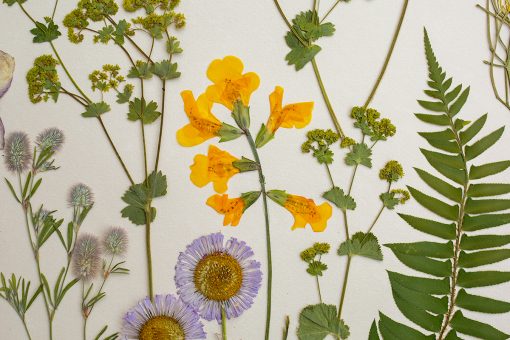
The monkeyflower path to Linnaeus began with Captain Meriwether Lewis and Lieutenant William Clark in 1806. The famed explorers were trained by botanists before setting out and spent many quiet moments on their expedition collecting plants and seeds. As a flower presser myself, it is fun to imagine the zen-like moments of the men stopping along the Blackfoot River to delicately press a yellow monkeyflower.
The plants may have been a “discovery” to the explorers, but it was well known to the indigenous peoples. Sacagawea and the Lemhi Shoshone tribe used monkeyflower to make a poultice of crushed leaves for rope burns and wounds. Other tribes used the plant in tea form for stomach aches.
Over 100 plant species collected on the expedition were new to science. Those included multiple forms of monkeyflowers. Along with the common yellow, Lewis first documented a great purple monkeyflower that was named in his honor in 1814 as Mimulus Lewisii.
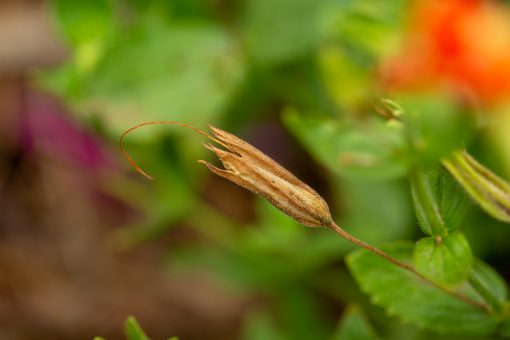
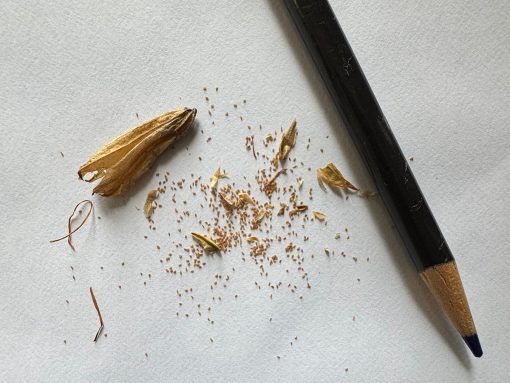
The scientific community loves the monkeyflower maybe even more than home gardeners. The exotic North American plants and seeds were transported, cultivated, and adored by Victorian gardeners. But it is also true that an estimated 1000 scientific papers discuss the wonders and complexities of the monkeyflower.
In 2012, Scientific American revealed “the world’s newest flower.” Mario Vallejo-Marin, a plant evolutionary biologist, discovered the new species in Scotland. The plant was formed by two Mimulus ancestors originally hailing from America. One was the very same common yellow monkeyflower growing in my garden.
The monkeyflower turns out to be a model for studies of evolution and ecology. The hybrid flower found in Scotland contains a rare mutation that has avoided the usual genetic dead-end. The discovery gives scientists a chance to watch the origin of a species as it happens. The plant is a “genomic revolution” with twice the amount of genetic material. Mimulus peregrinus can potentially adapt more easily to changing environmental conditions. A plant worth studying closely.
With so much scientific attention, it’s not surprising that a controversial restructuring and naming began also in 2012. While many resources appear to ignore the updated nomenclature, DNA evidence leaves only seven species in the genus Mimulus.
Most of the monkeyflowers – like the two herbaceous, water-loving plants in my garden – are now considered Erythranthe. Another large group that is part-woody and drought-tolerant are in the genus Diplacus. But you won’t see that distinction in the extensive Mimulus database created by the University of Connecticut at mimubase.org.
Erythranthe is from Greek meaning “erythros” for red with “anthos” for flower. The genus may be a better fit scientifically, but the poetry is missing. It’s hard not to prefer Mimulus, a name chosen to match the grinning face of the happy flowers. The tags say Erythranthe guttatus and cardinalis. But my monkey mind says Mimulus as I silently swing by the garden to mimic those simian smiles.
